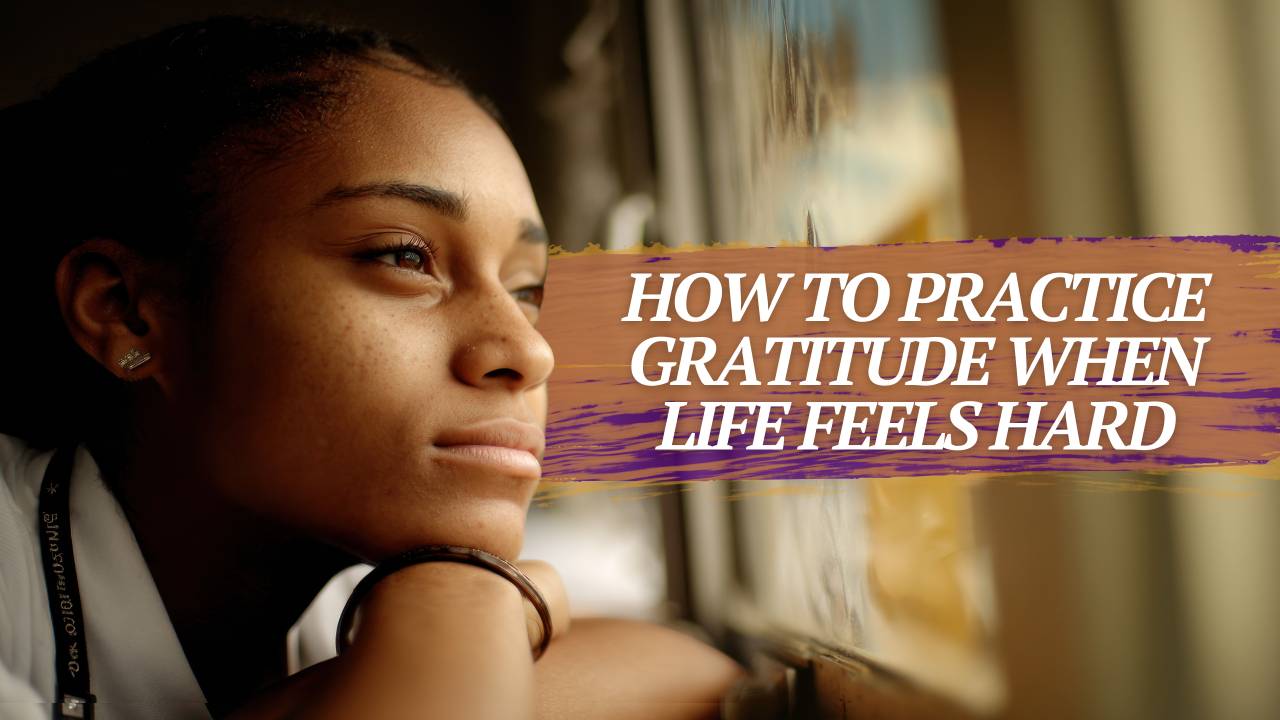How to Practice Gratitude When Life Feels Hard
Nov 19, 2025
Some mornings, it’s easy to find gratitude. Other times, it feels like too much to ask. I remember working with a client—a woman in the midst of burnout and grieving the loss of her father—who came into session and said flatly, “If one more person tells me to write a gratitude list, I’m going to scream.” I didn’t blame her. She was exhausted, raw, and overwhelmed. The idea of feeling grateful felt hollow.
That session reminded me that gratitude isn’t always sunshine and smiles. It’s not something you force. It’s something you reach for—even if just barely—because you know it can anchor you to what’s still good and still yours, even in a storm.
And science backs this up: studies show that gratitude doesn’t require you to deny pain—it actually helps regulate the nervous system and improves resilience, especially during hard times (Wood, Froh, & Geraghty, 2010; Algoe, 2012). Gratitude isn’t the opposite of grief or burnout—it’s the balm we can apply gently, without rushing healing.
Try This:
1. Swap “grateful for” with “still holding.”
When life feels heavy, the phrase “I’m grateful for” can feel false. Try saying, “What am I still holding onto that’s steady, comforting, or true?” It might be your morning tea, your dog’s tail thump, a friend who texts to check in. Honor the small, quiet things.
2. Make it sensory.
Ask: What do I see, hear, smell, or touch that’s helping me stay present right now? This grounds the body and helps gratitude emerge naturally. I’ve guided clients through this exercise in session, and often it’s something like the weight of a cozy blanket or the sound of wind in the trees.
3. Honor the Both/And.
It’s okay to feel overwhelmed and grateful at the same time. In session, I often say, "Two things can be true." Let gratitude sit next to your grief—not replace it. One client used this phrasing to talk about burnout at work: “I’m overwhelmed, and I’m grateful for the coworker who checked on me.” That simple sentence helped her feel seen—by herself.
4. Don’t do it alone.
Sometimes gratitude needs to be witnessed. Share one thing you’re holding onto with a trusted friend or therapist. It deepens connection and reinforces your nervous system’s sense of safety (Brown & Wong, 2017).
Gratitude isn’t about pretending everything’s okay. It’s about remembering that even in heartbreak or exhaustion, there is still beauty, still connection, still breath. You don’t have to feel grateful to begin practicing it. You just have to be willing to look for it—one soft step at a time.
References
Algoe, S. B. (2012). Find, remind, and bind: The functions of gratitude in everyday relationships. Social and Personality Psychology Compass, 6(6), 455–469. https://doi.org/10.1111/j.1751-9004.2012.00439.x
Brown, K. W., & Wong, S. Y. (2017). How gratitude changes you and your brain. Greater Good Magazine. https://greatergood.berkeley.edu/article/item/how_gratitude_changes_you_and_your_brain
Wood, A. M., Froh, J. J., & Geraghty, A. W. A. (2010). Gratitude and well-being: A review and theoretical integration. Clinical Psychology Review, 30(7), 890–905. https://doi.org/10.1016/j.cpr.2010.03.005


